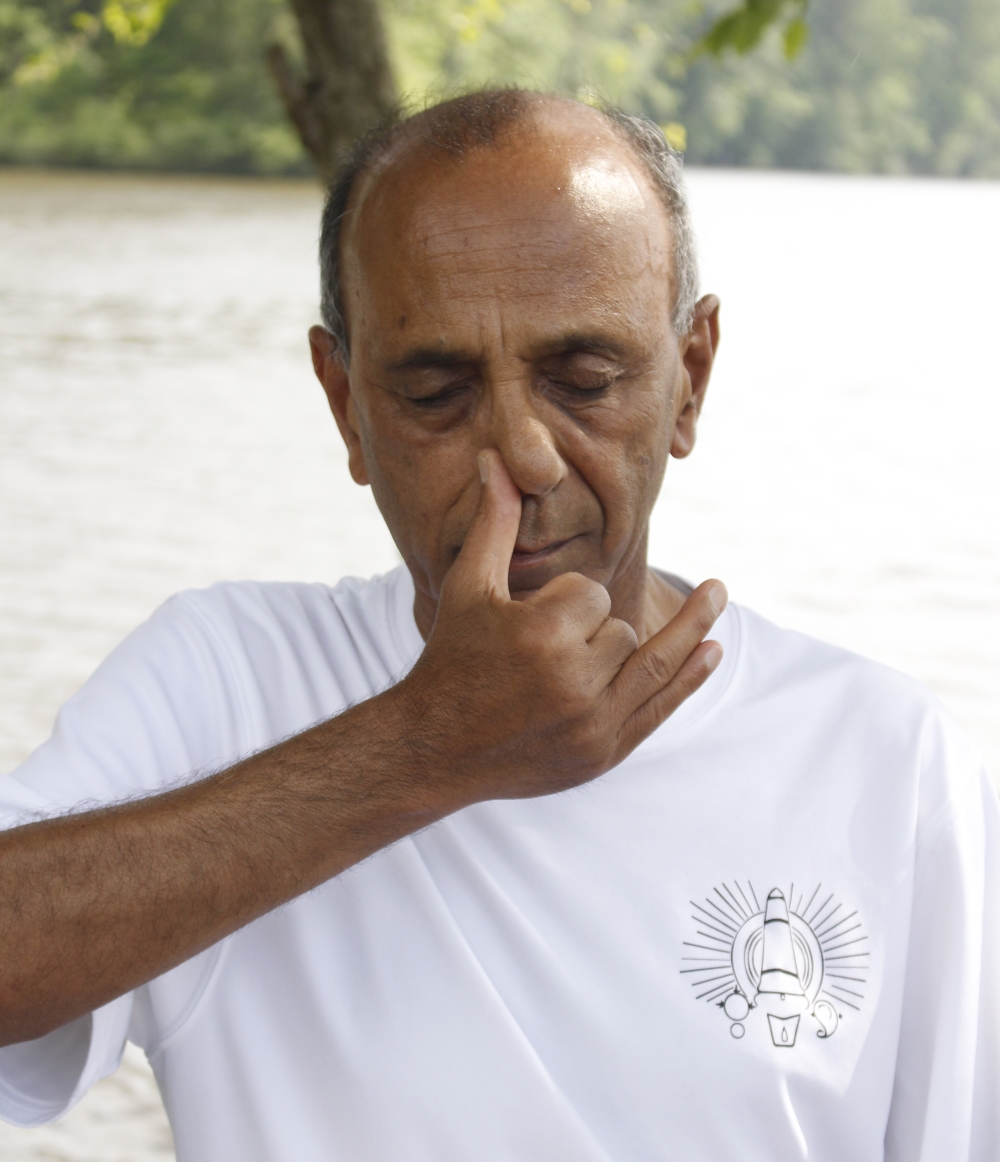
Samavritti pranayama
Normal breathing, which happens 24 hours of the day without our intervention, is a continuous flow of inhalations and exhalations. As part of pranayama practices, in addition to inhalation and exhalation, breath retention plays a very important role. We have the ability to voluntarily hold the breath at any time during the breathing cycle. We can hold the breath during or after inhalation or during or after a complete exhalation. As such, a pranayama breathing cycle can consist of these four components:
- Puraka (Inhalation)
- Rechaka (exhalation)
- Antar kumbhaka (breath retention after inhalation)
- Bahya kumbhaka (breath retention after exhalation)
One of the pranayama practices that uses breath retention both after inhalation as well as exhalation is the Same-vritti pranayama, popularly known as the square wave pranayama. The word "sama" means "equal" and "vritti" in this context could mean "rotation/revolution". In Sama-vritti pranayama, all the four components of the breathing cycle, as listed above, are made equal in time duration.
I hope you will enjoy practicing with me using the video.
We will be practicing two different variations of the sama-vritti pranayama. In the first variation, the inhalation and exhalation are done through both the nostrils; in the second variation, the practice is integrated with Nadi Shuddhi Pranayama (alternate nostril breathing).
Sama-vritti – breathing through both nostrils
Step-by-step
- Sit in any comfortable cross-legged sitting posture with the spine upright, arms and shoulders relaxed.
- Start with simple deep, ujjayi breathing, without any retention, keeping the durations of inhalation and exhalation equal. Take four to five deep breaths.
- Introduce retention of breath after inhalation only, none after exhalation. Over a period of four to five deep breaths, gradually increasing the duration of retention after inhalation. Finally, make the three components – inhalation, retention and exhalation – of equal duration.
- Now introduce retention after exhalation also. Over a period of four to five deep breaths, gradually increasing the duration of retention after exhalation, make all the four components – inhalation, retention, exhalation and retention – of equal duration.
- I suggest that you start out with a duration of, say, 5 seconds. To get an idea of the duration, keep a count in your mind with "om 1, om 2 etc…." After the first cycle, if the duration seems too challenging, bring the duration down to 4 seconds. If you felt too comfortable, you can attempt increasing it to 6 seconds in the second round. After two or three cycles you will find your own comfortable duration.
- Continue with Samavritti practice for 8 to 10 breaths.
- End the practice with relaxed, regular breathing pattern.
Sama-vritti – integrating it with Nadi Shuddhi (alternate nostril breathing)

Chin-mudra
This could seem a little more challenging in the beginning. However, with some practice, you will become very comfortable with the sequence.
Step-by-step
- Sit in any comfortable cross-legged sitting posture with the spine upright, arms and shoulders relaxed.
- Start with the regular Nadi Shuddhi practice, without any retention, using deep, ujjayi breathing. Keep the durations of inhalation and exhalation equal.
- Making the Vishnu Mudra with the right hand and Chin Mudra with the left, begin by closing the right nostril with the right thumb and exhale through left. Now, inhale left, close the left nostril with the ring finger, and exhale through right nostril. At the end of exhalation, inhale through right. Now, close the right with the right thumb and exhale left. Continue for about four cycles.
- Now introduce breath retention after inhalation only, and continue for another 4-5 breathing cycles. Try to keep the durations of inhalation, retention and exhalation equal.
- Now introduce breath retention after exhalation as well. Feel free to make adjustment to the duration of each of these four components. Especially after introducing breath retention after exhalation, you may find it more challenging to maintain the same duration as before. In your practice, you must make sure that you don’t feel any kind of strain while trying to maintain equal duration of all four components.
- Continue the practice for about 7-8 breathing cycles.
- When you finish, continue with your natural, relaxed breathing pattern.

Vishnu mudra
Benefits
The practice of sama-vritti pranayama involves a deep sense of focus and concentration. Since you are trying to maintain the same duration for all the four components of the breathing cycle, the mind has no time to drift away to other thoughts. As such, this is a highly recommended practice as a form of "dharana", which is the preliminary stage of the practice of meditation. You can do the sama-vritti practice for 8-10 minutes and then transition to your own meditation.
Contraindications and precautions
There are no real contraindications for this practice. Obviously, if you have a blocked nose or have difficulty breathing through one of the two nostrils, you may not be able to do the practice. The main precaution is that at no time you should feel any kind of strain during the practice.
.
Recent Comments